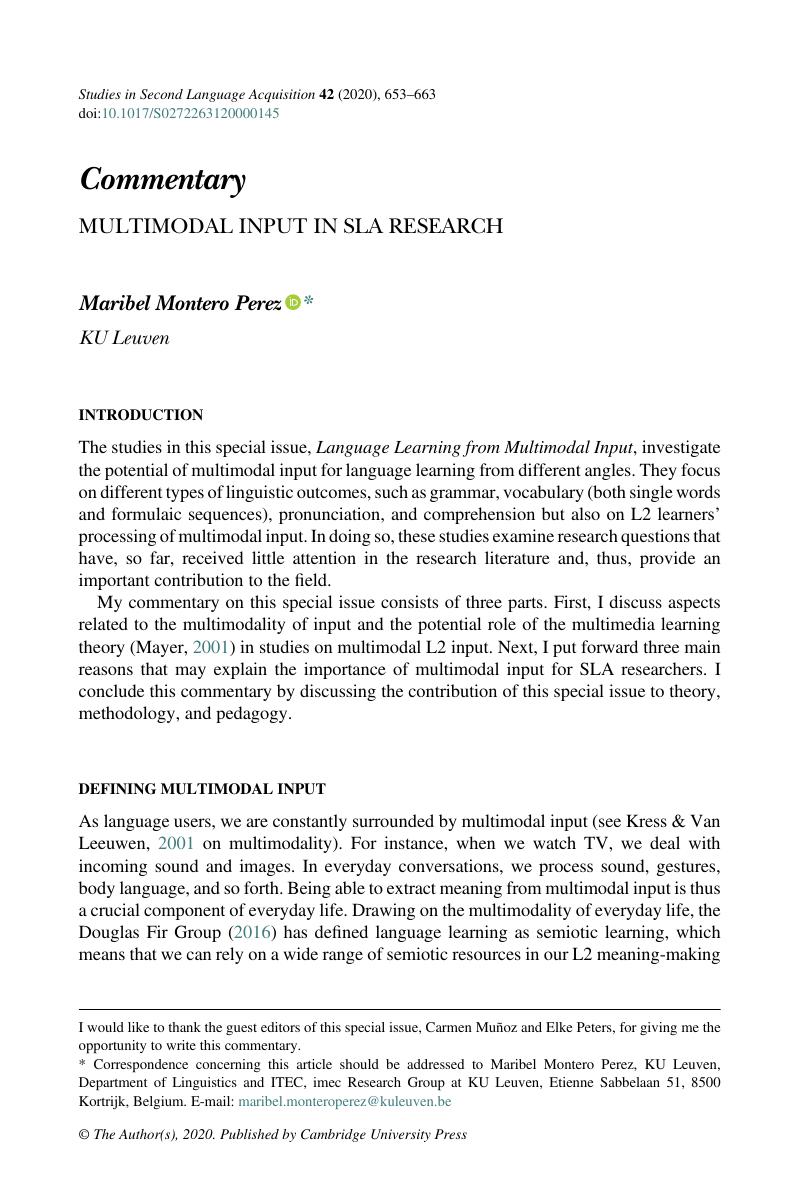Crossref Citations
This article has been cited by the following publications. This list is generated based on data provided by Crossref.
Dang, Thi Ngoc Yen
Lu, Cailing
and
Webb, Stuart
2022.
INCIDENTAL LEARNING OF SINGLE WORDS AND COLLOCATIONS THROUGH VIEWING AN ACADEMIC LECTURE.
Studies in Second Language Acquisition,
Vol. 44,
Issue. 3,
p.
708.
Pellicer-Sánchez, Ana
2022.
Multimodal reading and second language learning.
ITL - International Journal of Applied Linguistics,
Vol. 173,
Issue. 1,
p.
2.
Ellis, Nick C.
2022.
Second language learning of morphology.
Journal of the European Second Language Association,
Vol. 6,
Issue. 1,
p.
34.
Wu, Huizhen
Yu, Ping
Yang, Shenshen
and
Chen, Xuanyuan
2022.
Video Captioning Effects on EFL Listening Comprehension and Vocabulary Learning.
International Journal of Computer-Assisted Language Learning and Teaching,
Vol. 12,
Issue. 2,
p.
1.
Dang, Thi Ngoc Yen
Lu, Cailing
and
Webb, Stuart
2022.
Incidental Learning of Collocations in an Academic Lecture Through Different Input Modes.
Language Learning,
Vol. 72,
Issue. 3,
p.
728.
Lopez-Ozieblo, Renia
2023.
Theory and Practice from a Cognitive Perspective.
p.
113.
Gesa, Ferran
and
Miralpeix, Imma
2023.
Extensive viewing and L2 vocabulary learning.
ITL - International Journal of Applied Linguistics,
Wand, Ann
2023.
Segregation in Language Education.
p.
87.
Mai, Shijie
Ma, Xue’Er
and
Pei, Hong
2023.
A Comparative Study on the Effectiveness of Multimodal Input and Digital Multimodal Composing on Vocabulary Learning.
p.
244.






